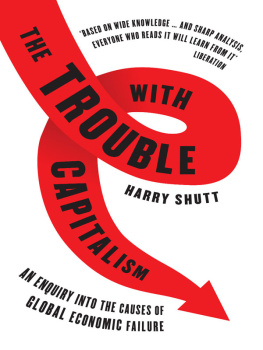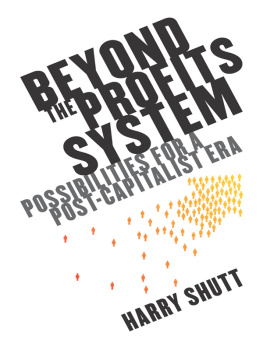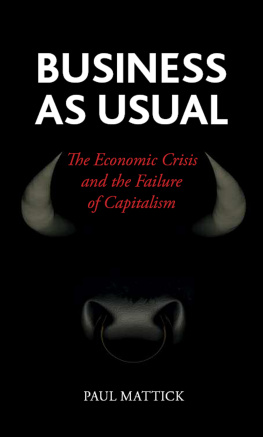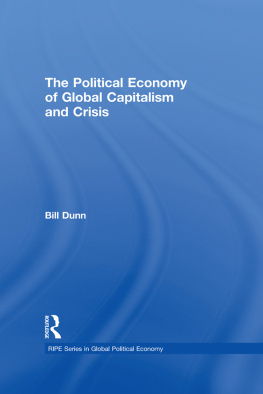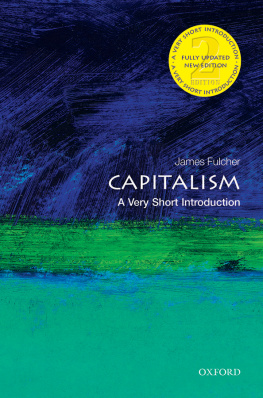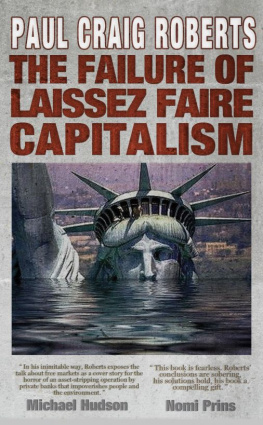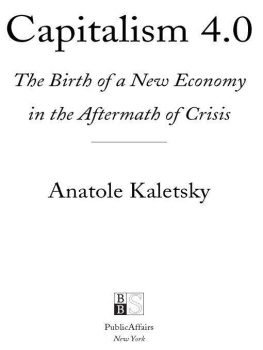
About the Author
HARRY SHUTT was educated at Oxford and Warwick universities. He worked for six years in the Development and Planning Division of the Economist Intelligence Unit (EIU). He then moved to the Research Department of the General and Municipal Workerss Union (197376) and subsequently became Chief Economist at the Fund for Research and Investment for the Development of Africa (197779). Since then he has been an independent economic consultant. His books include The Myth of Free Trade: Patterns of Protectionism since1945 (1985), The Trouble with Capitalism: An Inquiry into the Causes of Global Economic Failure (1999), A New Democracy: Alternatives to a Bankrupt World Order (2001) and The Decline of Capitalism: Can a Self-Regulated Profits System Survive? (2004).
The Trouble with Capitalism
An Enquiry into the Causes of Global Economic Failure
________________
HARRY SHUTT

ZED BOOKS
London & New York
The Trouble with Capitalism: An Enquiry into the Causes of Global Economic Failure was first published in 1998 by Zed Books Ltd, 7 Cynthia Street, London N1 9JF, UK and Room 400, 175 Fifth Avenue, New York, NY 10010, USA
This ebook edition was first published in 2013
www.zedbooks.co.uk
Copyright Harry Shutt 1998, foreword 2009
The right of Harry Shutt to be identified as the author of this work has been asserted by him in accordance with the Copyright, Designs and Patents Act, 1988
Designed and typeset in Monotype Garamond by illuminati,
Grosmont, www.illuminatibooks.co.uk
Cover designed by Rogue Four Design
All rights reserved. No part of this publication may be reproduced, stored in a retrieval system or transmitted in any form or by any means, electronic, mechanical, photocopying or otherwise, without the prior permission of Zed Books Ltd.
A catalogue record for this book is available from the British Library
Library of Congress Cataloging in Publication Data available
ISBN 978 1 84813 794 3
Contents
Wider Symptoms of Disintegration: I The Wreckage of Soviet Communism
FOREWORD
Apocalypse Now?
S INCE this work was conceived and written in the mid-1990s, much has unquestionably changed in public perceptions of the worlds financial and economic prospects. Most obviously, there is an inescapable recognition that the prolonged global stock-market boom which had by 1997 been in progress for fifteen years and had seen major indices rise by as much as sevenfold has given way to a sustained period of declining performance over the subsequent period, starting with the bursting of the dotcom bubble in 2000. It has thus conspicuously confounded the euphoric predictions of an indefinitely sustained rise in the market, on which many cheerleading analysts (with significant encouragement from such authoritative figures as the Chairman of the US Federal Reserve Board) had incited investors to bet their shirts right up until the millennium collapse.
The fact that this failure has only begun to be generally recognised since the start of the global credit crunch in August 2007 is due to the successful engineering of a prolonged market rally from 2003 which most media commentators chose to portray as a new bull market but which has now ended in a new meltdown that has sent share prices back to the level of 1997.
Thus the extraordinary profligacy of this latest credit bubble, following that of the 1990s, can be seen to have made possible for this brief four-year period a rise in global growth at rates up to double the average recorded in the preceding twenty-five years. As should have been obvious, however, such a rise in expenditure (most of it on personal consumption) could only have been achieved through exceptional levels of borrowing that could not be sustained for more than a few years. Equally, it should have been clear that the level of debts incurred could only be repaid (if at all) at the expense of much lower levels of consumption in future. In short, vast numbers of people in the industrialised countries had been induced to spend far beyond their means, with the inevitable consequence that, once this process became manifestly unsustainable and easy credit was withdrawn, demand for many goods and services would fall off a cliff.
The resulting financial and economic collapse, which is by now widely perceived as the most serious crisis of global capitalism since the Great Depression of the 1930s (if not in its entire history), is clearly in line with the predictions made in the book. Yet, while to that extent it may appear to have been vindicated, its analysis of the causes of the crisis is still very far from being generally accepted. Indeed mainstream analysts have devised some bizarre explanations for the onset of the crisis, while steadfastly ignoring its long-term, fundamental causes.
Thus at the time of writing the most widely peddled official account of the origins of the financial crisis is that it stems from a savings glut in emerging markets, particularly China, which it is alleged flowed in large volumes to developed-country markets, where it had the effect of driving down interest rates. This in turn, the story goes, encouraged borrowers and lenders to enter into risky loans in markets that were lightly regulated, ultimately leading to the crucially omits is the fact that (as noted above) the low interest rates driving the credit bubble were actually the result of deliberate policy on the part of the US Federal Reserve to prop up financial markets and the economy from 2001 in response to the bursting of the dotcom bubble in 2000 by holding interest rates below the level of inflation. Perhaps the most striking aspect of this patently dishonest analysis is its failure to take account of or explain any of the other financial bubbles that had been inflated since 1987 an apparent attempt to explain the present financial crisis as something that had blown up out of the blue, if not quite an act of God.
Such deliberate distortions of reality reflect a more general, and all too understandable, tendency on the part of the global establishment to try to ignore the longer-term factors behind the crisis. In particular they seek to divert attention from the chronic relative stagnation of the world economy since the 1970s, which has made it increasingly impossible to find sufficient outlets for reinvestment of inexorably accumulating corporate profits not to mention the artificially stimulated flows of capital into pension funds and other savings vehicles in productive assets, as opposed to unproductive and highly risky speculation. The central theme of the book, particularly of , is how the would-be saviours of the capitalist profits system have since the 1970s resorted to ever more ingenious methods to overcome this inescapable tendency the essence of the business cycle, familiar from the earlier history of capitalism since the nineteenth century.
It is notable, however, that those who resist this analysis are no more willing or able openly to try to confront or refute it than they were at the time the book was first published in 1998. The same applies to the rather more novel argument advanced in the book that the problem of excess capital has been further exacerbated since the 1970s by technological change tending to raise the productivity of capital and thus reduce the amount of it needed for each extra unit of output. A related and even more important aspect of this phenomenon is the reduced demand for labour, which has resulted in its progressive devaluation along with that of capital. Since the book was written this trend has arguably become even more pronounced and inescapable, as the pressures of the globalised market reveal the impossibility of creating sufficient adequately paid jobs to meet the demand from the still rapidly growing labour supply.
Next page
